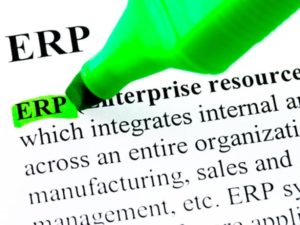 Challenges and Risks in ERP Organizational Change
Challenges and Risks in ERP Organizational Change
The ERP implementation risk is real, can be significant, and can invoke substantial loss of organizational capital (time, money, and effort). Despite the competitive advantages that an ERP implementation could provide an organization, implementations have high failure rates and can have significant challenges. ERP organizational change has inherent and potentially significant business risks, and there has been a great deal of research that demonstrates a high failure rate for ERP organizational change efforts. Anecdotal evidence, case studies, and research demonstrate that in general, the realization of ERP’s potential benefits can be quite challenging. ERP implementations can often require a significant amount of time, money, effort, and resources in order to implement and assimilate.
Persistence of Challenges Since the 1990s ERP Boom
Since the ERP boom in the 1990s, even though many of the ERP challenges are known, challenges, risk, and the failure rate aren’t improving, and ERP implementations remain quite challenging. Most research suggests that ERP projects can take between one to three years but with the benefits not being realized until months after implementation. The significant resource requirements (time, money, and effort) and challenges required for successful ERP assimilation are well understood in the ERP field. There is strong consensus on this point among interdependent ERP researchers. Most ERP professionals and researchers share the same perspective and understand that there can be significant ERP organizational change challenges, risks, and failure rates. For example, Hawari and Heeks (2013) state that 50 to 75 percent of US organizations encounter some level of failure. Global and readily recognized ERP brand names have either failed entirely or significantly struggled from ineffective ERP systems.
Realities of ERP Challenges and Failures
The fact is, while successful ERP implementation and assimilation offer a strategic advantage, ERP challenges and failures can be significant, and the challenges are real and frequent. While the definition of failure can be subjective (and can mean anything from a significant amount of wasted time, money, and effort, lack of proper functionality, or even to catastrophic failure), preventing any level of failure is critical.
Importance of Successful ERP Organizational Change
Successful ERP organizational change matters because the evidence demonstrates that ERP failure is extremely costly to U.S. organizations. The risk to the organization’s ERP assimilation goal if success is not achieved could lead to a loss in production, a decrease in product quality, loss of customers, a decrease in profits, and/or loss of sales. And, worst yet, plant closure, bankruptcy, and/or lawsuits.
Diverse Reasons for ERP Failure
ERP organizational change fails due to a large array of reasons, and the number of horror stories about failed and out-of-control ERP projects is significant. Despite the significant challenges, businesses view the potential return of benefits of successful ERP system assimilation to be worth the time, money, effort, risks, and challenges.
The Antidote
The antidote you ask, ERP Organizational Change Research
Learn more about the leaders in ERP Organizational Change, Nestell & Associates.
